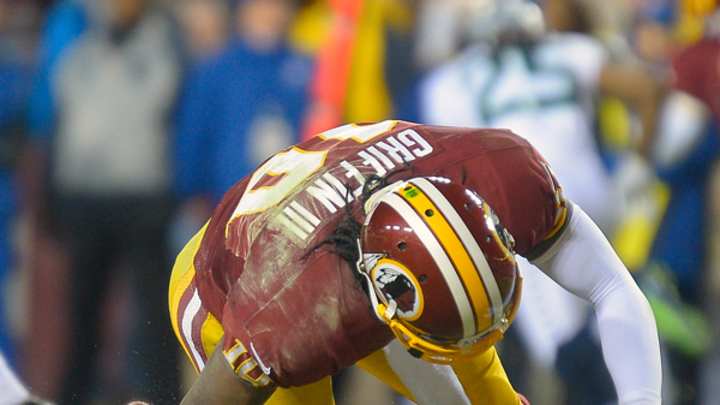Six Months After the Turf Ate RGIII's Knee, There's Fluffy New Grass in FedExField


Do you remember the last time you saw Robert Griffin III—you know, the face of the Washington Redskins, the Adidas cash cow, the game-changing young NFL quarterback and, most recently, the superhuman knee ligament rehabilitatee—play football?
Of course you do, because you remember watching him tumble to the grassless, dirt-spewing FedExField surface that was at least partially responsible for shredding RGIII’s ligaments in the wild card game against the Seahawks on Jan. 6. That moment prompted coaches to decry the field conditions, the Redskins to promise a review and the NFL Players Association to demand action.
Well, the franchise QB that you remember seeing will be back next season. That filthy earth, however, will not. As recently-released photos show, the Redskins are getting serious about their grass.

You can be sure that both RGIII and his Redskins teammates—along with other NFL notables—are loving the images of a completely new field, the constitution of which is a new bermudagrass sod mix specifically designed by Oklahoma State University horticulture experts in conjunction with the United States Golf Association. “Latitude 36,” as the lawn is called, started commercial production in 2011, and has a better pedigree than the team that will be playing on it: It captured the "top bermudagrass" award in the prestigious National Turf Evaluation Program.
Bermudagrass reigns as king of the turf—especially in the south—because of its durability, ability to repair itself quickly and resistance to heat. The highest-rated turfs in the NFL—Raymond James Stadium in Tampa Bay and University of Phoenix Stadium in Arizona—use bermuda. As you travel north, ryegrass and bluegrass get mixed in more to help with winter durability. The Redskins completely did away with its old blend, “Tif Sport,” as it allowed too much silt buildup and restricted water drainage, thereby jeopardizing the health of the grass during rainy months.
In place of the flawed mix, the Redskins installed a new baselayer of sand, and then began placing the new turf over top of it in June. The Skins will also, for the first time, re-sod the most-trafficked parts of the field following the team’s Nov. 3 home game, giving the team almost three weeks to have freshened-up turf ready for its next tilt in the District on Nov. 25. At that time the field will likely be winterized with a Tifway 419 bermudagrass mix that is overseeded with perennial ryegrass to create a "non-shifting sod," according to Dennis Martin, an OSU professor and turfgrass specialist.

The FedEx Field appointment is just the latest high-profile installation of the cold-tolerant Latitude 36, which is good for use in about half of the nation’s climates. The turf was recently added to practice facilities for the Eagles and Ravens, and is rumored for up to three more stadiums soon. With high traffic tolerance, excellent tensile strength and a fine texture, the grass was destined for sports field greatness.
Toss in the exceptional visual appeal, and not only will the Maryland-grown turf actually play well, but it’ll look good doing it. That should help calm nervous Redskins fans. And quarterbacks.
Tim Newcomb covers stadiums, design and technology for Sports Illustrated. Follow him on Twitter at @tdnewcomb.
